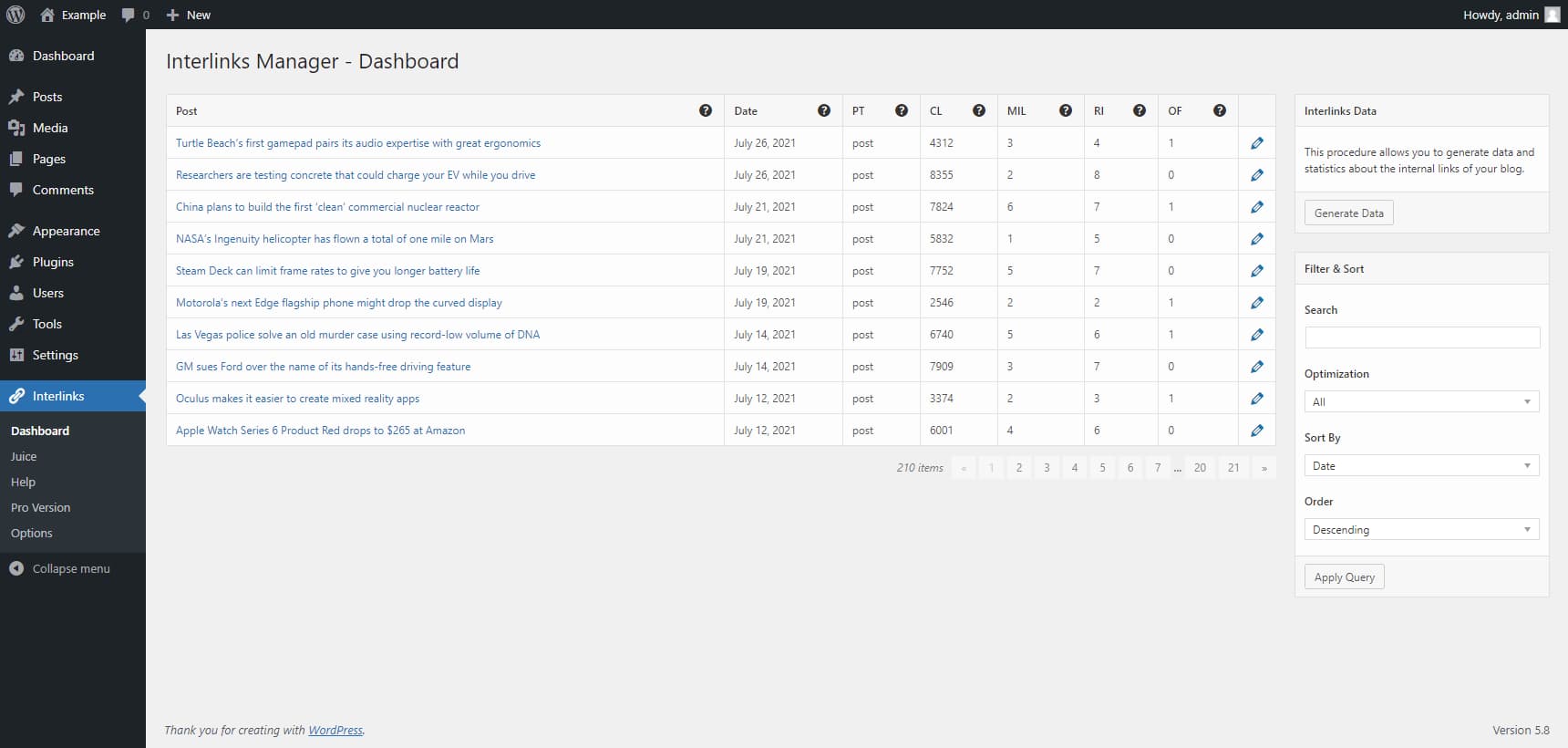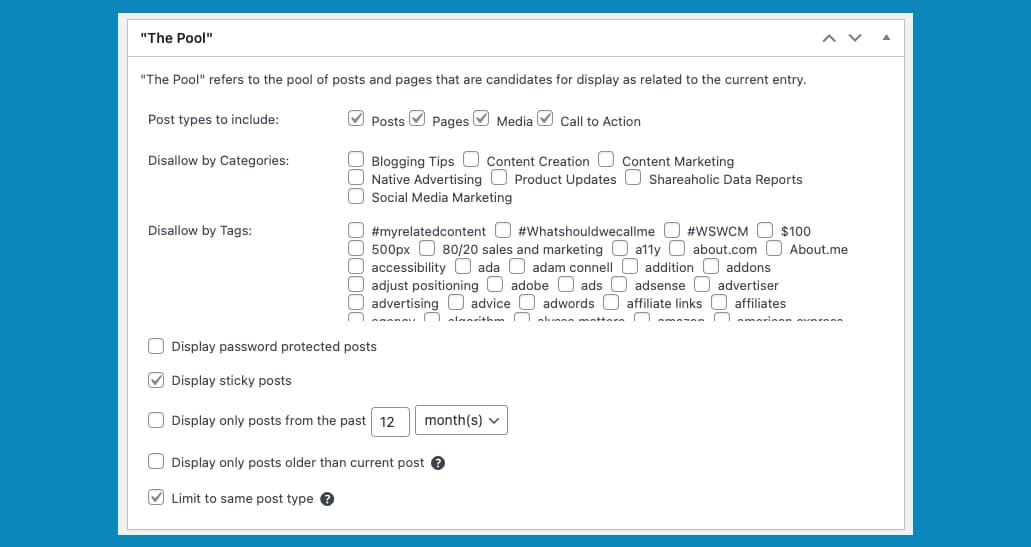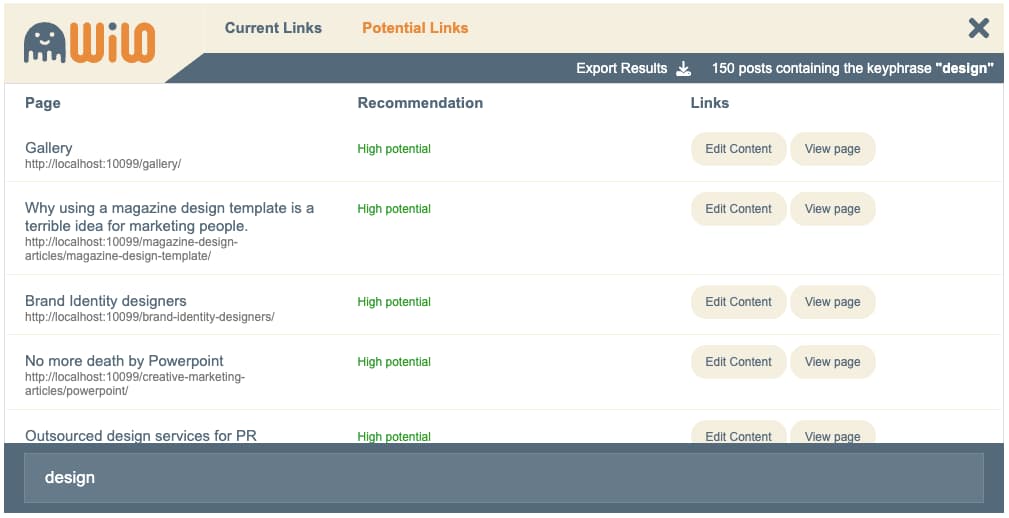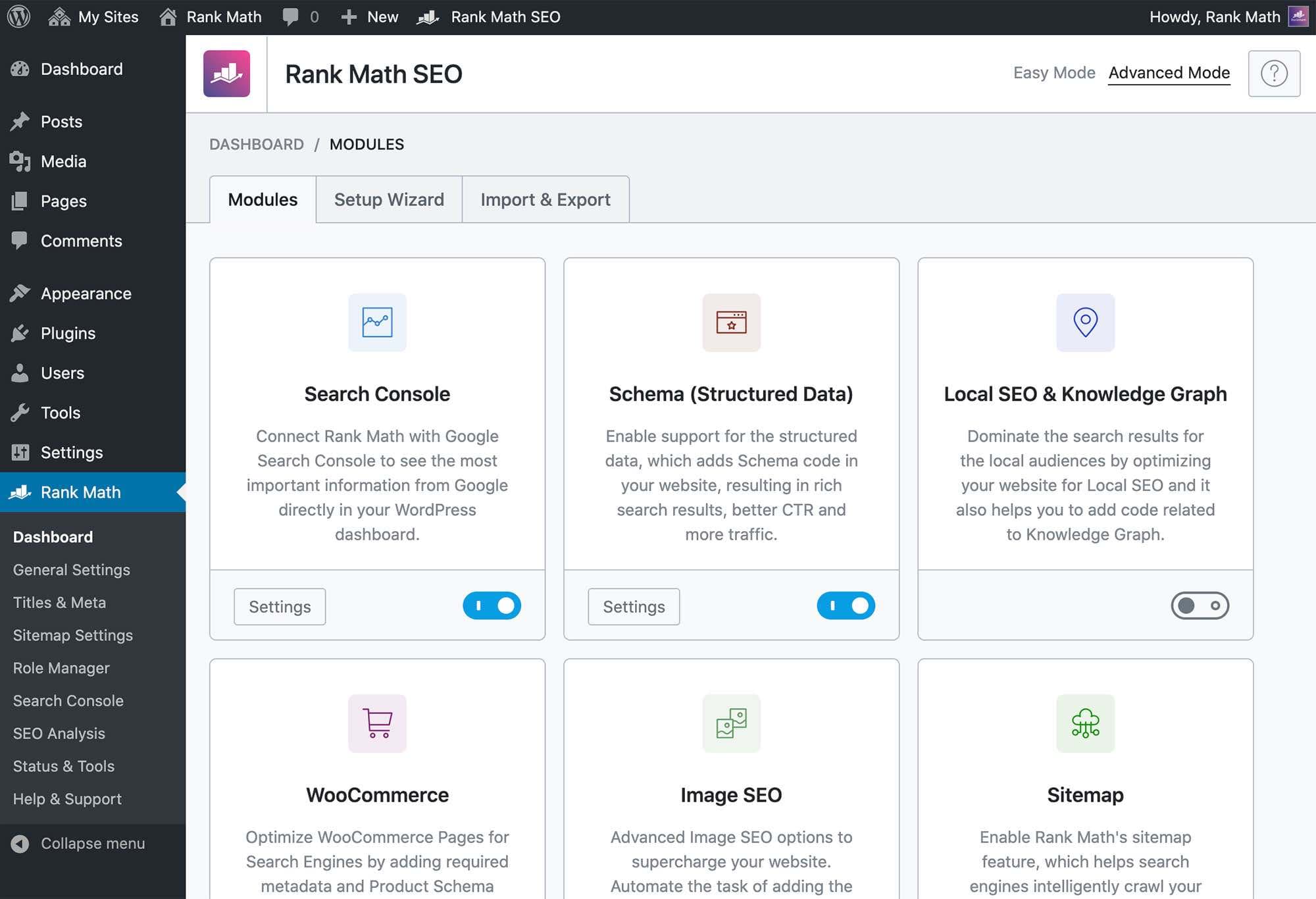If you’re working on your SEO strategy, you’ve probably encountered the importance of internal and external link building.
If you haven’t built linking into your strategy from the start, you might be overwhelmed as you implement the change. But no need to fear, internal linking tools are here to help.
In this post, we’ll examine what internal link-building tools do and the benefits they can have for your business. You’ll also preview the best internal linking tools on the market so you can find a solution that meets your needs. Let’s dive in.
What are internal link-building tools?
The Benefits of Internal Link-Building Tools
What are internal link-building tools?
Internal link-building tools are software that help you find opportunities to place internal links on your website. The tools take a manual, tedious process that can take hours and turn into a quick, few-minute task that you can do regularly.
So, why should you use internal link-building tools?
Internal links increase your link value, which helps you rank higher and get more traffic. Internal links also connect your content, giving Google an idea of the structure of your website.
Plus, your visitors can easily learn more and find related pages.
Internal linking establishes a hierarchy on your site and allows you to give more value to your most important pages.
Let’s say one of your pages is internally linked three times. And one is linked 100 times. That shows the type of content you post and points Google to the page you want to get the most views on because it’s the most important.
However, the process is usually very slow. Internal linking requires going back to old posts and linking to newer ones.
Many people just link old posts to newer posts, but it’s beneficial to point readers who land on an older post (because it has more SEO juice) to pages that aren’t as established.
With an internal link-building tool, you can automate this process. But there are more benefits than just saving time in your day. Let’s dive into some below.
The Benefits of Internal Link-Building Tools
Link-building can improve your website’s performance in search. Let’s start with the stats.
It’s clear that link-building impacts your site’s ranking. Here are five additional benefits of internal link building.
1. You can establish a relationship between related content on your website.
When Google crawls your site, it follows all the links on the page to figure out the relationship between various pages, posts, and other content. That way, Google will learn which pages on your site cover a similar subject matter.
Internal links will establish a relationship between related blog posts, alerting Google to the type of content you offer and building authority in your industry.
2. Linking helps orphaned content get discovered by Google.
Orphaned content includes web pages that have no internal links pointing to them. Without an internal link, Google can’t find and index the orphaned pages.
Although you might have a sitemap that lists the URL of your pages, search engines may take a long time to reach those pages without internal links.
This is especially true for large websites that take a lot of resources to crawl or newly created sites that don’t get visited by Google often.
3. You can increase link value for your newer content.
Link value is important with SEO. When you publish a page, it builds up “SEO juice” — meaning it gains credibility through page views, external links, etc.
Newer pages don’t have any of that, of course. By linking your posts internally on older pages, you’ll be able to increase the value of your new links.
You can increase the link value to your newer content using the SEO juice you’ve already built up with Google on older pages.
4. You can improve engagement metrics and the user experience.
You always want people to stay on your site, right? How do you do that? Pointing them to other related pages will help them learn more about you and why they should use your product or service.
It’s the “binging” content experience people have on TikTok and YouTube.
You want to create the same idea on your website. Not only does it help your site, but it’s also a better user experience — visitors use your resources, learn from an expert in the industry, and hopefully become a fan of your work.
They’ll then follow you, and you can build a relationship with them. That’s the best user experience you can have with a company.
5. Internal linking tells Google what keywords you want to rank for.
Internal links send a clear message to Google about what keywords you want to rank for. Anchor text is the text that links to a page ( this is anchor text). It’s highlighted, so when you click on it, it takes you to a new page.
The anchor text of an internal link should be a relevant keyword. The keyword should be a keyword you want the linked page to rank for. It sends a message about keywords and page associations to search engines.
Anchor text tells Google this page should rank for this keyword — giving your page more SEO juice, relevance, and a better chance at ranking for that keyword.
Phew, okay, we’ve learned a lot. Now, let’s help you get it done as quickly and efficiently as possible. Here’s our list of the best internal link-building tools you can use.
The 11 Best Link Building Tools
- Link Whisper
- All in One SEO (AIOSEO)
- Internal Link Juicer
- Yoast SEO
- YARPP
- Internal Link Finder
- Interlinks Manager
- Rankmath
- SEO Press
- Google Search Console
- Ahrefs
1. Link Whisper
- Pricing: $77 annually for a single-site license; $117 annually for a 3-site license; $167 annually for a 10-site license
- Features: Google Search Console (GSC) integration, WordPress integration, finding orphan posts, intuitive internal link-building process, and reporting
- Support: Email support is available for all bundles
- Best for: Managing site-wide internal linking
This plugin crawls your entire site, indexes existing internal links, and creates a report to show you the link gaps you can fill.
The reporting feature shows how many posts were crawled, links found, internal links, orphaned posts, broken links, and 404 errors.
The tool will point you to posts that are related and not being linked to currently. It suggests anchor text and links. If you agree, all you have to do is click on a box to add the link.
It also finds orphaned posts (posts that have no incoming or outgoing internal links).
What we love: The combination of link automation and link customization is unmatched in the industry so far. Additionally, if you own several websites, Link Whisper can help you suggest internal linking strategies between those websites.
2. All in One SEO (AIOSEO)
- Pricing: $49.60 annually for basic; $99.60 annually for plus; $199.60 annually for pro; $299.60 annually for elite
- Features: Link assistance, finding orphaned content, making internal link suggestions
- Support: Standard and priority support available
- Best for: WordPress sites
AIOSEO is a beginner-friendly WordPress plugin that helps you improve your SEO without any technical knowledge.
One of the features is a Link Assistant, which helps you build better internal links. This tool will provide a detailed link report to show you the number of internal links, outbound links, and affiliate links you have for each post and page.
Then, it shows you opportunities to improve your internal links. You can see the exact phrase and anchor text. All you have to do is click a button, and then it will add that internal link to your content.
What we love: AIOSEO will also help you find orphaned pages so you can add links to them to get them indexed faster and rank higher.
3. Internal Link Juicer
- Pricing: Free for basic; $69.99 annually for pro; $249.99 for a lifetime license
- Features: Automatic link building, customize all links, varying anchor text, automatically opening links in a new tab
- Support: Email support
- Best for: WordPress, beginners, role-based editing, varying anchor text (very helpful so Google doesn’t ding you)
You don’t get the same level of control you might have with Link Whisper or AIOSEO, but Internal Link Juicer is a great option for beginners and advanced users. Plus, there is a free and paid version.
You select your keywords, and the software automatically builds links based on your content. You can also select pages that don’t need internal links.
The tool then gives you a report that allows you to track links, check best-performing ones, and replace broken links.
The Pro version takes automation to a whole new level. You have to choose the anchor keyword and the internal link associated with it.
However, one downside of this tool is that you can’t check your existing internal links. You can only build new automated ones. It also doesn’t integrate with GSC or handle broken internal links.
What we love: With the premium version, you can enable internal links between categories, customize internal links, and import focus keywords.
Plus, manual customization allows you to exclude some links and allow and restrict certain links within a category.
4. Yoast SEO
- Pricing: $99 yearly
- Features: Internal linking is only available in the premium version, finding orphaned content, finding related posts
- Support: Yoast Academy, basic and premium support available
- Best for: Orphaned content
Yoast SEO focuses on increasing your chances to rank by supporting you in building a solid internal linking structure.
It identifies the best internal linking structure required to maximize on-page SEO — which helps improve your website crawling and navigation.
The best features include finding orphaned content, giving related post suggestions, and suggesting child/sibling post relationship links.
What we love: You can add a related links block below your posts and show related posts, pages, categories, and tags.
5. Yet Another Related Posts Plugin (YARPP)
- Pricing: Free
- Features: Custom templates, customized algorithm
- Support: Professionally maintained and actively supported with regular updates
- Best for: Related posts links on WordPress
YARPP is the most popular and highest-rated related posts plugin for WordPress. This tool creates related post sections on your pages to introduce visitors to other relevant content.
It can help boost visitor engagement and time on site, helping your SEO.
You can show related pages, blog posts, media files, and even call-to-action (CTA) buttons. This way, your top pages don’t get buried underneath new ones.
The tool creates internal links to your most popular pages and/or posts so search engines can easily find your best pages.
What we love: YARPP comes with custom templates that you can match with your website design. Plus, it uses a customizable algorithm to determine which pages to show, considering your post titles, tags, categories, and more.
6. Internal Link Finder
- Pricing: Free and premium versions available
- Features: Internal link scoring, duplicating internal links, anchor text editing
- Support: Forum support
- Best for: Large sites
Internal Link Finder is an easy-to-use plugin to manage your internal link structure. This works on WordPress sites and helps you find internal link opportunities and manage your existing internal links page-by-page.
One of the best features is that it gives you a full breakdown of your internal linking score and lists areas for improvement.
What we love: Internal Link Finder can check if there are too many pages linking back to a target page with the same anchor, identify orphan pages, and find pages with no internal links. Plus, you can export the data to a spreadsheet.
7. Interlinks Manager

- Pricing: $39 for a lifetime license; optional $12.75 to cover 12 months of customer support
- Features: Robust analytics, tracking clicks from visitors, link equity calculator
- Support: Paid support options
- Best for: Sites on a budget
Interlinks Manager works differently than almost every other tool we list in this article.
In addition to link suggestions based on keywords an algorithm picks up, you can define specific keywords inside each post. The tool will automatically add internal links to your post from other posts that contain the same keywords.
What we like: Interlinks Manager has a robust analytics feature that tracks clicks from visitors to internal links, so you know which are effective.
The tool lets you know statistics on how much “link juice” a given URL has, and you can also download the analytics into a spreadsheet.
When an internal link isn’t effective, you can adjust the anchor text or the positioning of your internal links.
The drawbacks are that the tool isn’t as intuitive and can’t identify orphan posts.
8. Rankmath
- Pricing: $59 annually for pro; $199 annually for business; $499 annually for agency
- Features: Link suggestions, other SEO tools
- Support: 24/7 support
- Best for: Sites with a pillar/cluster structure
Blogs with a pillar/cluster post model have one pillar post (which broadly covers a topic) and several more detailed cluster posts (which address a specific keyword related to that topic in-depth).
Internal links power this site structure. Each cluster post links to the pillar page, building brand authority and link juice for your most important pages.
Rankmath is one of the best internal linking tools for sites using the Pillar/cluster model because you can define your pillar posts for each category on your blog.
Then, the tool will automatically make link suggestions to other posts in the same category.
What we like: You can build links by entering the keywords you want to use as anchor text.
9. SEO Press
- Pricing: Free; $49 annually for pro; $99 annually for insights, $128 annually for bundle
- Features: Statistical weighting method link building, identifying rich anchor text
- Support: Support center, email support
- Best for: Statistical-based linking
SEO Press is a plugin for WordPress that uses statistical weighting to decide which keywords to link to for your internal link structure. The method calculates the importance of a keyword within a page compared to other articles and then suggests up to five internal links per post.
What we like: The SEO meta box can work with all page builders and identify rich anchor text.
10. Google Search Console (GSC)
.jpg?width=2334&height=1352&name=internal-linking-tools-gsc%20(1).jpg)
- Pricing: Free
- Features: Link reports, link errors, filtered search, downloadable CSV
- Support: Google support
- Best for: Finding orphan content
Google Search Console provides a link analysis report showing you your top linked pages (both internally and externally). The internal links will give you the number of internal links going to specific URLs.
However, it does not show anchor text and is only meant as a jumping-off point for building your internal links. You can download the report but will still need to add links to URLS manually.
What we love: This is great for finding orphan content. GSC shows you which URLs have zero internal links, so you can prioritize those and make it easier for search engines to find your posts.
11. Ahrefs
- Pricing: $99 monthly for lite; $199 monthly for standard; $399 monthly for advanced; $999 monthly for Enterprise
- Features: Link analysis, link opportunities
- Support: Help center; Ahrefs Academy
- Best for: Link opportunities and analysis
Ahrefs is an all-in-one SEO tool with several features, including an internal link site audit with the Link Opportunities tool.
You can find out what top pages you’re internally linking to, plus get opportunity suggestions. The feature looks at the top 10 keywords that each page on your site is ranking for and then looks for mentions of those keywords on your website to give you internal link suggestions.
Note: You’ll still need to manually update the links, but you can export link opportunities quickly.
Getting Started
Internal linking is an important part of SEO, and until recently, it has been a manual process. With internal linking tools, you can boost your SEO in minutes by finding internal link suggestions and adding to your posts with one click.

![→ Download Now: SEO Starter Pack [Free Kit]](https://no-cache.hubspot.com/cta/default/53/1d7211ac-7b1b-4405-b940-54b8acedb26e.png)
.jpg?width=1378&height=774&name=internal-linking-tools-link-whisper%20(1).jpg)
.jpg?width=1174&height=940&name=internal-linking-tools-aioseo%20(1).jpg)
.jpg?width=2615&height=1463&name=internal-linking-tools-internal-link-juicer%20(1).jpg)
.jpg?width=3016&height=1674&name=internal-linking-tools-yoast%20(1).jpg)

.jpg?width=1158&height=881&name=internal-linking-tools-yarpp-2%20(1).jpg)


.jpg?width=1200&height=1016&name=internal-linking-tools-seo-press%20(1).jpg)
.jpg?width=1906&height=988&name=internal-linking-tools-ahrefs%20%20(1).jpg)



![How to Optimize for Google’s Featured Snippets [Updated for 2024]](https://moz.com/images/blog/Blog-OG-images/How-to-Optimize-for-Googles-Featured-Snippets-OG-Image.png?w=1200&h=630&q=82&auto=format&fit=crop&dm=1724004002&s=13df73104762982790dab6dc8328023f)


